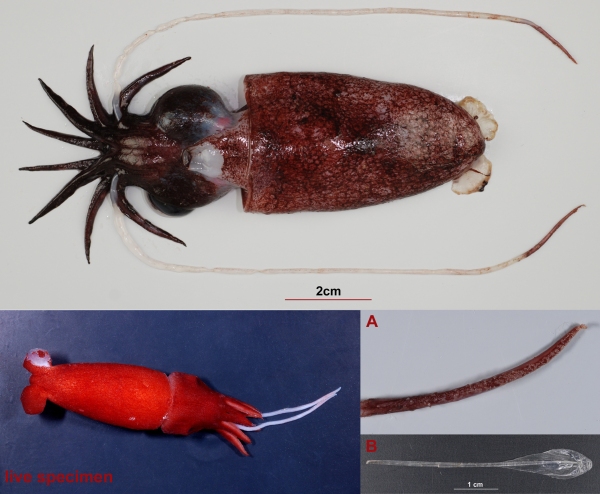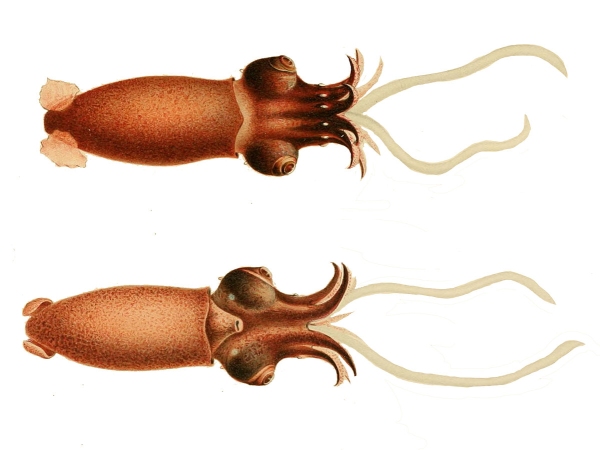The deepsea squid Bathyteuthis abyssicola Hoyle, 1885 has a circumpolar oceanic distribution, which means that it is commonly found right around the Southern Ocean at 100-4200 m depths. Its species name abyssicola hints at its deep abyssal oceanic origins.
Bathyteuthis abyssicola is a deep maroon colour when live, which looks black in the deeper, dark parts of the ocean. The squid has some small inconspicuous photophores at the base of some of its arms, which may help lure prey closer. This diagram from Chun, 1910 depicts the photophores nicely.
The mantle of the squid is blunt and robust, and it ends in two small paddle-like fins. Notice its large eyes? Its eyes each have large photosensitive vesicles just behind them. These might be an adaptation to help them detect faint bioluminescence in the dark of the deep ocean. The photosensitive vesicles of the species in the Bathyteuthis genus are among the largest known in any cephalopod. If you want to learn more about squid eye development, AUT MAppSc student Aaron Evans wrote a whole chapter on this in his thesis on the Ecology and Ontology of cranchiid squid.
It also has small narrow clubs, which are short and have few small suckers in 8-10 rows. These are used to grasp small prey from the zooplankton in the watercolumn.
This is a relatively small species of squid (< 8 cm mantle length), and the specimens we collected from the Ross Sea were all less than about 6 cm mantle length. The live specimen we caught and photographed was collected in a Multiple Opening, Closing Net and Environmental Sampling device or “MOCNESS”, which was used to collect tiny Zooplankton samples. NIWA Wellington Regional Manager Julie Hall and Victoria University PhD student Lisa Bryant discuss the MOCNESS catch on our 2008 IPY-CAML voyage in the video linked below. Now we know the MOCNESS is also an effective tiny squid catcher!




